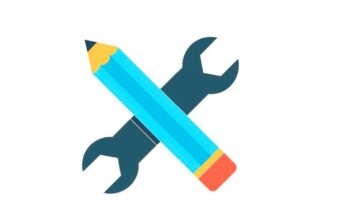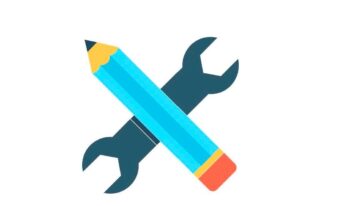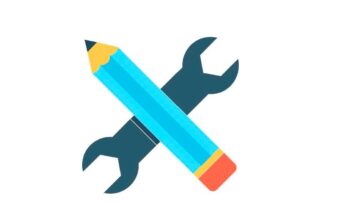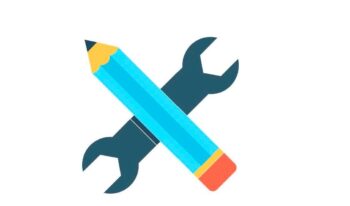QUICK LINKS
1.2.1 UNDERSTAND THE LIVES OF ANIMALS AND COMMUNITIES WHO OWN THEM
1.2.2 IDENTIFY POTENTIAL ISSUES RELATED TO ANIMAL WELFARE, AND ANIMAL-RELATED SERVICES AND RESOURCES, AND RELATED IMPLICATIONS FOR COMMUNITIES
1.2.3 IDENTIFY SHARED INTEREST FOR COMMUNITY AND ORGANISATION AND ORGANISATION TO WORK TOGETHER ON AN ANIMAL WELFARE IMPROVEMENT PROJECT
HELPFUL TOOLS AND RESOURCES
1.2.1 Understand the lives of animals and communities who own them
To effectively work with communities to change their behaviours to improve animal welfare, it is essential to first understand the animal owning community’s existing knowledge, attitudes, beliefs, and behaviours. Community needs assessments give the facilitator and the community a snapshot of the livelihoods, resources, service provision, daily activities of humans and animals, husbandry techniques, diseases, and their treatment. Needs assessments help identify communities’ belief systems about what is good animal welfare, gaps in current provision, highlight what needs to be accomplished, support decision making and help tailor goals and objectives specifically for the community.
You will use the understanding you have already gleaned about the community, its beliefs, and attitudes towards animal welfare as a foundation for the steps that follow.
It is helpful to first understand the issues affecting communities which could potentially impact animal welfare, and the relative importance of these issues to animal owning communities. When viewed through a one welfare [69] perspective, this understanding, combined with understanding of animal welfare issues gained in later steps, can help identify potential areas of overlap between animal and human needs or issues, which if addressed, could potentially positively impact communities’ wellbeing and that of their animals. It will be easier to generate motivation to address issues important to communities, which if addressed, would benefit both community members and their animals. This is particularly the case in situations where there are competing or conflicting needs and feelings between animals and people. For example, when there are limited household resources to adequately meet both the needs of people and their animals, human needs are understandably more likely to be prioritized over those of their animals; or animals may be used to earn an income to meet human needs in ways which may not be best for the animal’s welfare.

Figure 36: Visualizing One Welfare - interconnected nature of human well-being, animal welfare, and the environment.
Analyse and identify issues within the community that might directly or indirectly influence animal welfare. Investigate these key areas with community members:
- Livelihoods and working systems of animal owners:
- The composition and locations of the community members and their animals. The tool Mapping Animal Welfare Issues (T1b) can support this.
- Daily activities of all the people within each household. Using the Mobility map (T2), Daily activity schedule – communities (T4a) and Gender roles and responsibilities (T5) may help this process.
- Family’s main sources of income and their important livelihood assets, and whether these change through the year, the Seasonal calendar (T6) and Livelihood vulnerability analysis (T31) can assist here. - The lives of animals, including:
- Daily activities of any animal/s including both at work and rest, and any seasonal variations, which can be supported by the Daily activity schedule - animals (T4b) and the Seasonal calendar (T6) tools, completed from the animal’s perspective.
- Current husbandry and health practices: disease recognition and treatment, seasonal variations, and prevention, and cultural or traditional practices that could affect welfare. The Seasonal calendar (T6) and Mapping Animal Diseases (T1c) tools can assist with this process. - Animal-related service-providers and resources, using Mapping - Resources and Services (T1a) and Venn Diagram – resources and Services (T3a) can help this process:
- Identify service providers that serve the animal owning community.
- Identify animal related resources.
- Understand the location of animal-related service providers including distance from the community, availability, affordability, quality, seasonal availability, and preferred providers.
Throughout this process, listen for change talk, 2. Essential communication skills for promoting behaviour change, 3. Guidance on listening for change talk and 4. Guidance on facilitating conversations for change.
1.2.2 Identify potential issues related to animal welfare, and animal-related services and resources, and related implications for communities
Help community members assess their situation and that of their animals to generate a sense of shared interest in improving animal welfare using Focus Group Discussion (FGD) and following the steps outlined below. To support informed analysis and discussion here, it can be helpful to socialize the concept of animal welfare as a first step, through general outreach or using the Animal welfare conversation tool (T32) as time and resources permit.
- Organize group meeting(s) to analyse issues any group members are experiencing, reflecting on the observations throughout the initiation phase and issues identified during discussions from PLA tools used previous steps e.g. Mapping (T1), Mobility map (T2), Seasonal calendar (T6), Livelihood vulnerability analysis (T31), Changing trend analysis (T11a),
- Identify which of these issues directly or indirectly affect their ability to care for their animal and meet its needs. Any animal welfare issues identified through the Mapping - animal welfare issues (T1b) or through observations may be useful to reflect on here.
- Analyse these issues with discussions in member sub-groups such as animal owners, handlers, women, and children.
- Present findings to the whole group for agreement on issues identified as important to the group. You may wish to use the Pairwise Ranking (T8) tool to support the group in coming to agreement on identified issues.
- In a group, visit service providers and other stakeholders, visit sites, and investigate resources.
- Discuss animal welfare issues with stakeholders either individually or in a workshop (using Focus group discussions (FGD) along with PLA tools such as Three Pile Sorting (T23) can be helpful). Follow-up with a group meeting to analyse gaps in service and resource provision and practices – how can they be improved?
Facilitate regular community group meetings until the analysis is completed. The number of visits, meetings and the tools required to identify and analyse all the issues are flexible – every community is different.
Pay attention to change talk in terms of how members of the community talk about any desires to change, ability to change, reasons to change, need to change and commitment to change. Refer to the facilitators resources 2. Essential Communication Skills for Promoting Behaviour Change, 3. Guidance on Listening for Change Talk to support your process during this step. In addition, take note of key findings and insights and any potential external barriers to communities’ improving animal welfare, consider using the 20. Project Action Tracker to support your documentation.
1.2.3. Identify shared interest for community and organization to work together on an animal welfare improvement project
Once you have built rapport with the animal owning community and understand the local context and their priority animal welfare needs and concerns, organize separate community meetings or focus group discussions with different groups within the animal owning community such as men, women, and other potentially vulnerable groups, including any existing social or interest groups previously identified as being interested in improving animal welfare during the rapport building step. During the meetings, share the identified community needs and issues related to improving animals’ welfare that were identified through the community discussions carried out in previous steps. This is an opportunity for you to learn about different groups’ interests and motivations in relation to improving their animals’ welfare, as well as gauge their general level of awareness of issues. This is also an opportunity for them to learn about your interest in collaborating with them to create community groups interested in improving animal welfare, and to introduce your ways of working [67]. Consider carrying out an Animal welfare transect walk (T22) with groups of community members at this stage to increase awareness of the welfare condition of animals in the community as needed to help generate motivation and interest in working with the project.
Facilitate the group/s to identify the key findings and concerns influencing animal welfare which they are interested in addressing, along with the specific individuals or groups interested in collaborating with the project and each other and note the best means for staying in contact with them.
In circumstances where improving the welfare of non-production working animals may be needed, but they are perceived as less valuable than production or income generating livestock whose needs are prioritized by communities, consider using the Increasing Perceived Importance of Animals (T27) tool. In such circumstances, this tool can be useful to improving communities’ awareness of the value of these working animals to the broader production system and the benefits they derive from it and help generate interest and motivation to address their welfare issues.
Tools and resources helpful to supporting this step include:
PLA Tools:
Mapping (T1)
Mobility mapping (T2)
Venn diagram (T3)
Daily activity schedule (T4)
Gender roles and responsibilities (T5)
Seasonal calendar (T6)
Pair-wise ranking (T8)
Changing trend analysis (T11a)
Three pile sorting (T23)
Animal Welfare Transect Walk (T22)
Increasing Perceived Importance of Animals (T27)
Livelihood Vulnerability Analysis (T31)
Facilitator Resources:
2. Essential Communication Skills for Promoting Behaviour Change
3. Guidance on Listening for Change Talk
4. Guidance on facilitating conversations for change
10. Resources Supporting Initiation Phase Assessments
20. Project Action Tracker






